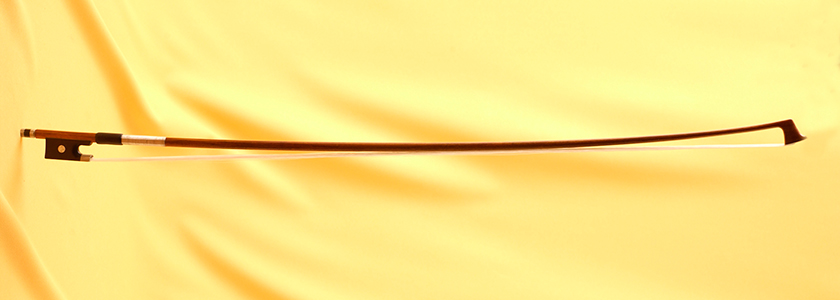Trivia
Violinists must bow to the horse
Horsehair graces the bow for violins and cellos, and each bow has about 150 individual hairs. Horsehair has many small bumps that cannot be seen with the naked eye, and those bumps create the friction that produces the characteristic subtle weeping tone of the violin. The most popular horsehair, which is said to produce a good tone, is white horsehair from Mongolia.
Yet, this claim seems based mostly on the fact that horse breeding is a bustling industry in Mongolia, and their horses have relatively long, bushy tails for their height, making them a perfect source of horse hair. Yet, the horse sacrifices the hair of his tail for the sake of the tone of the violin, which is a bit sad. Who was it that said that when they play the violin they can hear the braying of a horse?
(Source: Takatomo Kurosawa, World Dictionary of Musical Instruments, 1984 Yuzankaku, Tomoyasu Fujinuma, The Story of Music Through Instruments, 1973 Radio Gijustsusha, and others)

Musical Instrument Guide : Violin Contents
Origins
Structure
How to Play
How the Instrument is Made
Choosing an Instrument
Care and Maintenance
Trivia
- The f-hole used to be a C-hole or S-hole
- Why the f-hole?
- Violinists must bow to the horse
- Steel strings or gut strings? That is the question
- Is the chinrest the unsung hero of the violin?
- Most violin varnishes are also medicines
- Violin masterpieces: Solos I
- Violin masterpieces: Solos II
- Violin masterpieces: Solos III
- Violin masterpieces: Concertos I
- Violin masterpieces: Concertos II
- Viola masterpieces: Chamber music
- Viola masterpieces: Concertos
- Cello masterpieces: Concertos I
- Cello masterpieces: Concertos II
- Cello masterpieces: Solos
- Contrabass masterpieces: Concertos
- Contrabass masterpieces: Chamber music
- Orchestral masterpieces featuring the contrabass
- What do you call the part on the bow that you hold?
